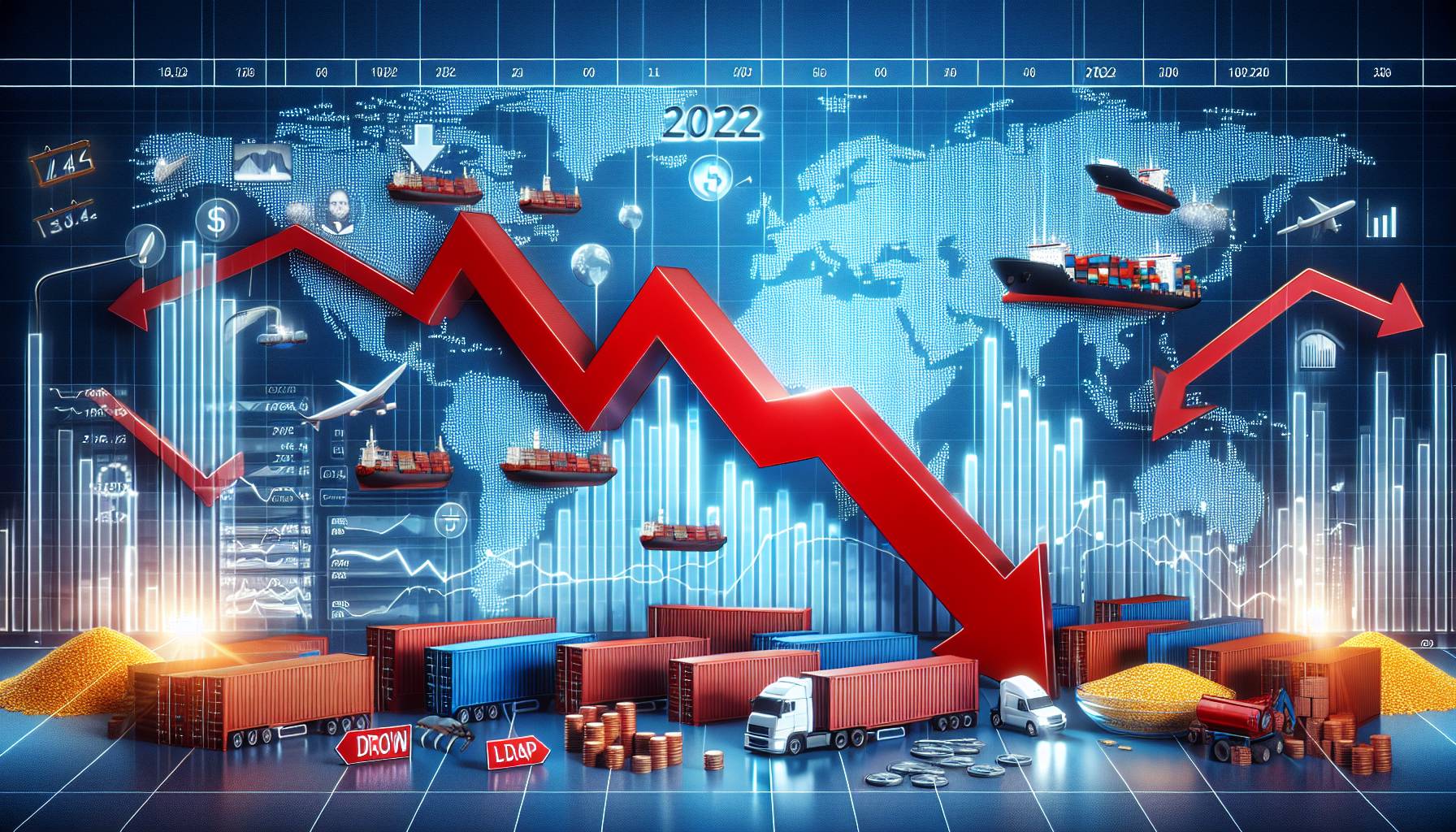
Commodity prices plummet amid trade disputes
Commodity markets experienced a sharp decline on Friday, with prices overall decreasing by an average of 4.4%. This widespread drop signals heightened investor concerns about intensifying trade disputes, especially those arising from U.S. President Donald Trump’s forceful trade measures. The decline was particularly severe in industrial metals and energy, industries that are extremely reactive to alterations in global trade conditions.
Crude oil futures fell notably, with Brent crude sliding under crucial support thresholds. Base metals like copper and aluminum also recorded significant losses, as traders reconsidered demand projections amid possible disruptions to supply chains. Agricultural products were not exempt, with soybeans and corn experiencing substantial drops due to worries over export limitations and retaliatory tariffs.
“The market is factoring in a slowdown in worldwide trade movements, and that’s heavily impacting commodities,” commented a commodities strategist based in Sydney. “Investors are opting to stay on the sidelines until there’s more transparency on how far this trade disagreement might escalate.”
For Australian commodity exporters, the sell-off introduces both immediate obstacles and long-term strategic dilemmas. Iron ore, a principal export for the country, faced a slight decline, somewhat buffered by steadfast demand from China. Nonetheless, experts caution that ongoing uncertainty could adversely affect future contracts and investment confidence.
- Brent crude fell by more than 3% for the day, ending below USD $70 per barrel.
- Copper futures dropped nearly 5%, marking their largest single-day decline in over a year.
- Soybean prices reached a 10-month low due to concerns surrounding diminished U.S. and Chinese trade activity.
Market stakeholders are currently monitoring for any indications of a reduction in trade rhetoric, but with no resolution foreseeable, heightened volatility is anticipated. For finance managers and commodity traders in Australia, this situation demands a prudent stance on risk exposure and a reevaluation of hedging strategies.
Effect of Trump’s trade policies on global demand
Donald Trump’s trade policies, especially the application of tariffs on significant trading partners, have added a considerable amount of uncertainty to global demand predictions. The repercussions are being sensed throughout commodity markets, where demand is closely linked to the vitality of international trade. The U.S.-China trade dispute, in particular, has cast a lengthy shadow over global growth projections, leading to a reassessment of consumption patterns in major economies.
China, being the largest consumer of raw materials globally, plays a crucial role in influencing demand for Australian exports such as iron ore, coal, and liquefied natural gas. With Trump’s tariffs targeting Chinese goods and Beijing retaliating with its own measures, a noticeable slowdown in cross-border trade flows has resulted. This has led to diminished industrial activity in China, subsequently decreasing the demand for Australian commodities.
“We’re witnessing a classic demand-side shock resulting from policy uncertainty,” remarked a trade economist from Melbourne. “When the world’s two biggest economies are at an impasse, the consequential effects are palpable in every segment of the commodity market.”
For Australian producers, the immediate worry is the potential for contract renegotiations and shipping delays, particularly in industries like iron ore and coal that heavily depend on Chinese industrial production. In the long run, the trade war poses a threat to modify supply chain dynamics, with some manufacturers looking to diversify away from China. While this may open new avenues for Australian commodities, the transitional phase is likely to be characterized by volatility and price fluctuations.
In the energy sector, LNG exporters are encountering challenges as Asian buyers adopt a cautious stance amid unclear demand signals. Likewise, agricultural exporters are facing shifting trade partnerships and the risk of being caught in the midst of retaliatory tariffs, particularly within the grain and livestock sectors.
- Chinese steel producers have reportedly downgraded output forecasts for the latter half of the year, influencing iron ore demand.
- LNG spot prices in Asia have decreased as buyers postpone purchases while anticipating further price drops.
- Australian wheat exporters are keeping a close watch as China and other Asian markets reconsider sourcing strategies.
From a finance management viewpoint, the increased policy risk emphasizes the importance of having diversified customer portfolios and diligent scenario planning. Hedging strategies should consider not just price volatility but also potential disruptions in volume. In this environment, flexibility and risk management are crucial.

